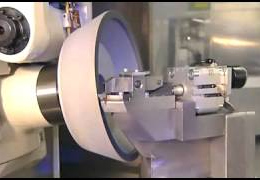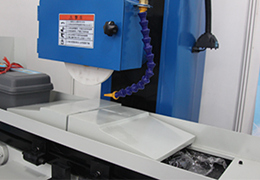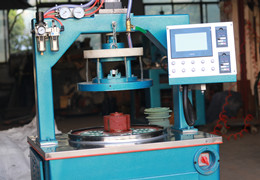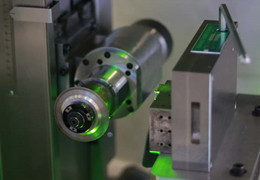Factors affecting the surface roughness of grinding machine processing and its improvement measures:
1. Factors related to the grinding wheel
Mainly grinding wheel particle size, hardness and dressing of the grinding wheel.
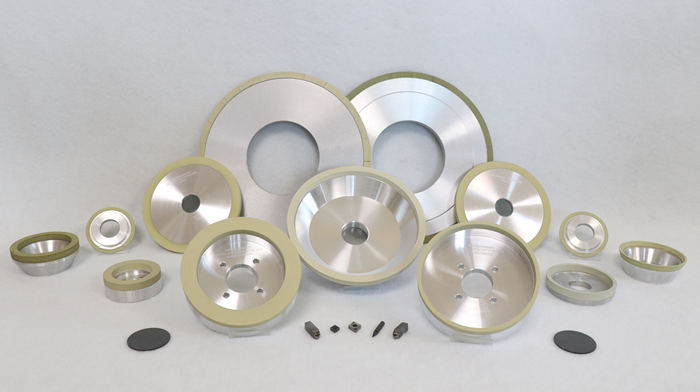
The finer the grain size of the grinding wheel, the more abrasive grains per unit area of the wheel, the finer the grinding surface scars, the smaller the surface roughness value. However, if the grain size is too fine, the grinding wheel is easy to be clogged, so that the surface roughness value increases, and at the same time, it is also easy to produce ripples and cause burns.
The hardness of the grinding wheel refers to the ease with which the abrasive grains can be dislodged from the wheel after being subjected to the grinding force. The grinding wheel is too hard, the abrasive grains can not be dislodged after abrasion, so that the surface of the workpiece is subjected to strong friction and extrusion, increasing the plastic deformation, the surface roughness value increases, and at the same time is also prone to cause burns; the grinding wheel is too soft, the abrasive grains are easy to dislodge, and the grinding effect is weakened, which will also increase the surface roughness value, so it is necessary to choose the appropriate hardness of the grinding wheel.
The dressing quality of the grinding wheel and the dressing tool used to dress the longitudinal feed of the grinding wheel has a close relationship. Dressing of the grinding wheel is to use diamond to remove the outer layer of the grinding wheel has been blunted abrasive grains, so that the cutting edge of the abrasive grains sharp, reduce the surface roughness value of the grinding surface. In addition, the smaller the longitudinal feed of the dressing wheel, the more cutting edges on the dressing wheel, the better the contour, thus obtaining a smaller surface roughness value.
2. Factors related to workpiece material
The hardness, plasticity, thermal conductivity of the material
Workpiece material hardness, plasticity, thermal conductivity has a significant impact on the surface roughness. Aluminum, copper alloy and other soft materials are easy to block the grinding wheel, more difficult to grind. Plasticity, poor thermal conductivity of heat-resistant alloys are prone to early disintegration of the grit, resulting in an increase in the value of the grinding surface roughness.
3. Factors related to processing conditions
Grinding dosage, cooling conditions and the precision and vibration resistance of the process system.
Grinding dosage has grinding wheel speed, workpiece speed, grinding depth and longitudinal feed. Increase the grinding wheel speed, it may make the surface metal plastic deformation propagation speed can not keep up with the grinding speed, the material is too late to deformation, so that the surface roughness value of the grinding surface to reduce show. Workpiece speed increases, plastic deformation increases, and the surface roughness value increases. The greater the grinding depth and longitudinal feed, the greater the plastic deformation, thus increasing the surface roughness value. The temperature is high during wheel grinding and the role of heat is dominant, so the role of cutting fluid is very important. The use of cutting fluid can reduce the temperature of the grinding zone, reduce burns, flush away the falling grit and chips to avoid scratching the workpiece, thus reducing the surface roughness value. However, it is necessary to choose the appropriate cooling method and cutting fluid.
In addition, for
cylindrical grinding machine,
internal grinding machine and surface grinding machine, the
spindle accuracy of its machine tool grinding wheel, the accuracy and smoothness of the feed system, the rigidity of the entire machine tool and vibration resistance, etc., are closely related to the surface roughness.
Influence of Grinding Machine Accuracy on the Machining Accuracy of Workpieces:
.jpg)
The geometric accuracy, stiffness, thermal deformation, motion stability and vibration resistance of the grinding machine will have a direct impact on the machining accuracy of the workpiece.
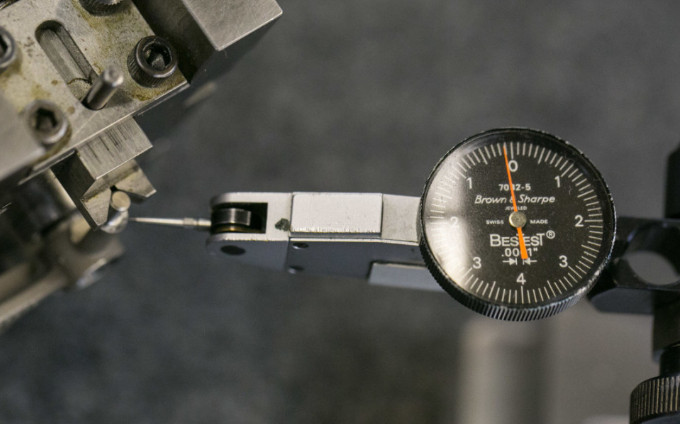
1. Geometric accuracy of grinding machine
It refers to the accuracy of motion and mutual position of each part without bearing load. It is impossible to make a machine tool absolutely precise, and there is always an unavoidable amount of error. This error will be reflected in the workpiece processing to varying degrees to the workpiece up, and affects the machining accuracy of the workpiece. Generally have the spindle radial runout and axial runout, table and other moving parts moving straightness, working parts of the mutual position error and transmission error.
Wheel spindle radial runout and axial runout and grinding machine headstock movement error, not only affects the surface roughness of the workpiece after grinding, but also make the workpiece to produce roundness and endface runout, resulting in uneven sparks in the grinding process. When the table moves in the vertical plane is not perpendicular, it affects the straightness of the workpiece's busbar in the internal and external cylindrical grinder, and grinds the plane in the surface grinder, resulting in a large error in the flatness of the workpiece. The centerline of the grinding wheel spindle axis of the external grinding machine and the centerline of the grinding wheel spindle axis of the internal grinding machine are not equal to the centerline of the headstock axis of the workpiece, and the workpiece busbar is hyperbolic when grinding internal and external cones. The centerline of the grinding wheel spindle axis is not parallel to the table moving direction, which affects the straightness of the end face of the workpiece after grinding. The transmission error of the grinding machine has a great influence on the processing accuracy of thread grinding and gear grinding.
2. Stiffness of grinding machine
It refers to the ability of its components to resist deformation when the grinder is subjected to external force (grinding force). That is, under the same grinding force, the smaller the deformation of the parts, the greater the stiffness. Conversely, a large deformation of a component means that the component is less stiff. The size of these deformations, destroying the original geometric accuracy of the grinding machine static, will cause the size of the machining error of the workpiece. So the machine tool with good stiffness has high machining accuracy of the workpiece.
3. Thermal deformation of grinding machine
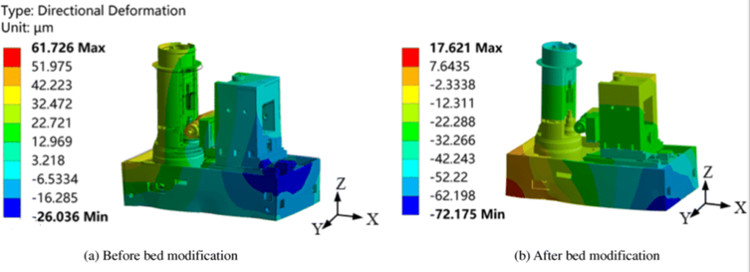
The heat source inside the grinder is not uniformly distributed, and the amount of heat generated by each part in the movement is also different, and the influence of external heat source on each part of the machine tool is also different, and the coefficients of thermal expansion of the parts due to the different materials are also different, resulting in different trace deformation of each part of the machine tool, so that the original geometric accuracy of the machine tool decreases, and affects the machining accuracy of the workpiece. Therefore, it is better to install the precision grinding machine in a constant temperature room to prevent the temperature change from affecting the precision of the machine tool and the workpiece.
4. Crawling of the moving parts of the grinding machine
When the moving parts of the grinding machine, such as the table and the grinding wheel holder, move unevenly during micro-cycle feeding or low-speed continuous movement, which is commonly known as creeping. When this phenomenon occurs in the grinder, it makes the feed uneven in the grinding process and affects the roughness of the ground surface of the workpiece.
5. Vibration of grinding machine
Grinding machine vibration in the grinding process, so that the grinding wheel and the workpiece to ask the relative position of the periodic changes that occur on the surface of the workpiece to produce vibration pattern, seriously affecting the processing quality and accuracy.
To improve the accuracy of the workpiece after grinding, in addition to the efforts to eliminate the impact of the above factors, we must also pay attention to the reasonable choice of positioning reference in the process of workpiece processing, clamping methods, grinding wheel selection and correct repair, reasonable choice of grinding dosage and process methods.

.jpg)



